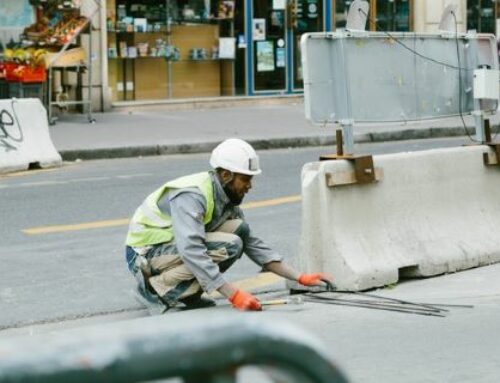According to estimates by the Economic Policy Institute, in the US, legally owed wages totaling over $15 billion are being stolen from minimum wage workers by their employers every year.
This $15 billion figure is just scratching the surface, as it only accounts for wage theft from minimum wage workers. Factor in underpayments to workers across all income levels, and experts estimate the total annual amount of wage theft could reach as high as $50 billion per year.
This is an economic crisis that is stripping billions from workers who can least afford it and forcing many onto unemployment insurance and food stamps just to get by. Despite the mind-boggling scope of this illegal underpayment epidemic, the US Department of Labor recovered just $274 million in stolen wages in 2023 – less than 2% of the estimated stolen wages from just minimum wage workers alone – and a mere 0.5% of the total wages stolen. This means over 99% of stolen wages are retained by unethical employers every year. The economic outlook for working Americans is bleak – and getting worse.
Common Forms of Wage Theft
Wage theft can take many different forms, including:
- Not paying workers for all hours worked (e.g. working off the clock)
- Failing to pay minimum wage
- Misclassifying workers as contractors to avoid overtime requirements
- Making illegal deductions from wages
- Denying workers their final paycheck after a departure or termination
- Not paying required overtime rates
- Miscalculating hours to undercount what workers are owed
No matter the method, wage theft is exploitation. By withholding owed compensation, employers are stealing from workers and their families.
What Does Wage Theft Look Like in the Construction Industry?
Wage theft is a pervasive problem in the U.S. construction industry. These are some common ways wage theft is experienced in the construction industry:
- Not Paying the Federal Davis-Bacon or State Prevailing Wage Rates: A construction worker works on a federal project where Davis-Bacon prevailing wage rates apply to all workers. The construction worker is not paid the Davis-Bacon wage rate. Or a construction worker works on a state government project, such as a public school or road construction work but is not paid the state prevailing wage rate. This is wage theft.
- Misclassifying Worker Wage Rate: A construction worker works 30 hours on an excavator, which is classified at an operating engineer rate, and 10 hours as a flagperson to direct traffic, which is classified at a laborer rate. The construction worker is paid 40 hours at the lower flagperson rate or even paid a “crossing guard” non-union rate. This is wage theft.
- Not Paying Hourly Benefits: A construction worker works 40 hours, but their employer only pays 20 hours into their fringe benefits and retirement. This is wage theft.
- Not Paying Donning & Doffing Time: Construction sites frequently require workers to wear special protective equipment like hard hats, safety glasses, steel-toed boots, reflective vests, etc. Putting on and removing this gear can take a significant amount of time, especially for jobs like demolition or hazardous material handling where more extensive protective suits are mandated. Under the Fair Labor Standards Act (FLSA), this donning and doffing time is considered compensable “hours worked” if it is an integral and indispensable part of the workers’ principal activities. However, many construction companies unlawfully fail to pay workers for the time spent gearing up before their shifts and removing equipment afterward.
- Commute Compensation: When employees have to travel from one job site to another worksite during their scheduled shift hours, such as when traveling between construction sites, making service calls at multiple locations, or any other work-related travel after the employee’s first commute into work, they are frequently not compensated, despite being required by law.
Why Is Wage Theft Bad?
Wage theft is a crime against workers and taxpayers. In addition to cheating the men and women who build our country’s infrastructure out of their hard-earned pay, construction companies that employ wage theft strategies also create unfair advantages over competitors that comply with the law. If a firm is able to illegally lower their labor costs (by stealing from their employees), they can routinely out-bid competitors, which creates a strong financial incentive for companies to engage in these practices. This has negative consequences for local businesses, construction workers, and their communities.
What to Do If You Are a Victim
- If you suspect your employer has committed wage theft, the first step is to gather documentation of your hours worked and compensation received. Review pay stubs, keep personal records of time worked, and try to find written policies or communications from your employer.
- Next, you may want to start by making your concerns known to your employer and human resources department to see if they will voluntarily correct the issue. If they refuse, your next recourse is to file a complaint with your state’s labor department or the U.S. Department of Labor’s Wage and Hour Division.
- An experienced employment attorney can also evaluate your situation, Documentation is critical in proving wage theft claims, so make sure to consult with a lawyer right away to understand your rights and options for legal recourse.
Wage Theft is a Crime. Don’t Let it Happen to You.
Wage theft may seem like just a financial issue, but for millions of underpaid workers, it is creating serious economic hardship and instability. No one should have their hard-earned wages stolen by an employer – period. It’s time to shine a light on this crisis and hold companies accountable.
We have a strong track record of fighting wage theft in the construction industry. Employers not paying the prevailing wage is one of the most common forms of wage theft in the public construction industry. We are here to make sure workers are paid what they are legally required. If you believe you’ve been a victim of prevailing wage theft, it’s essential to seek counsel by an experienced prevailing wage attorney.
Photo by Andrea Piacquadio











Leave A Comment